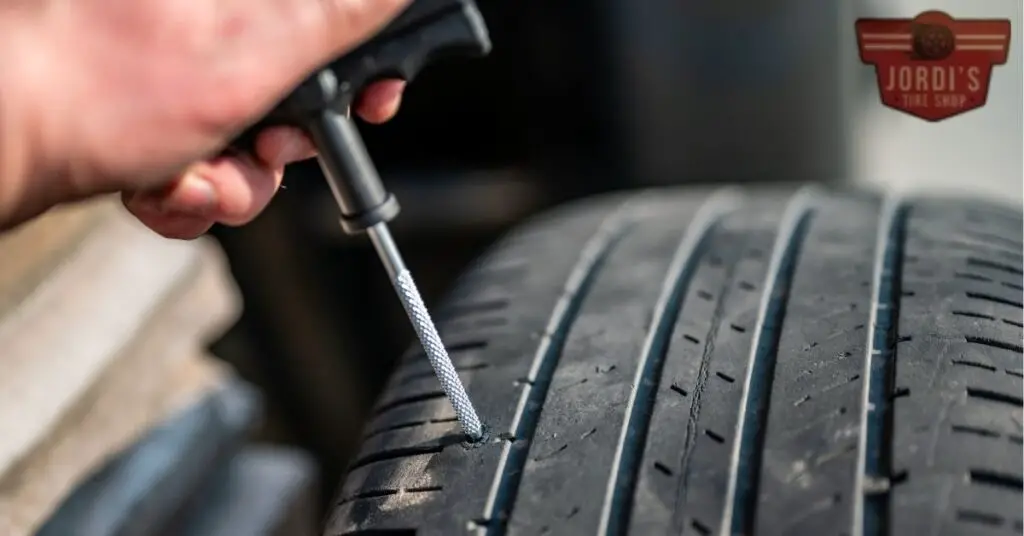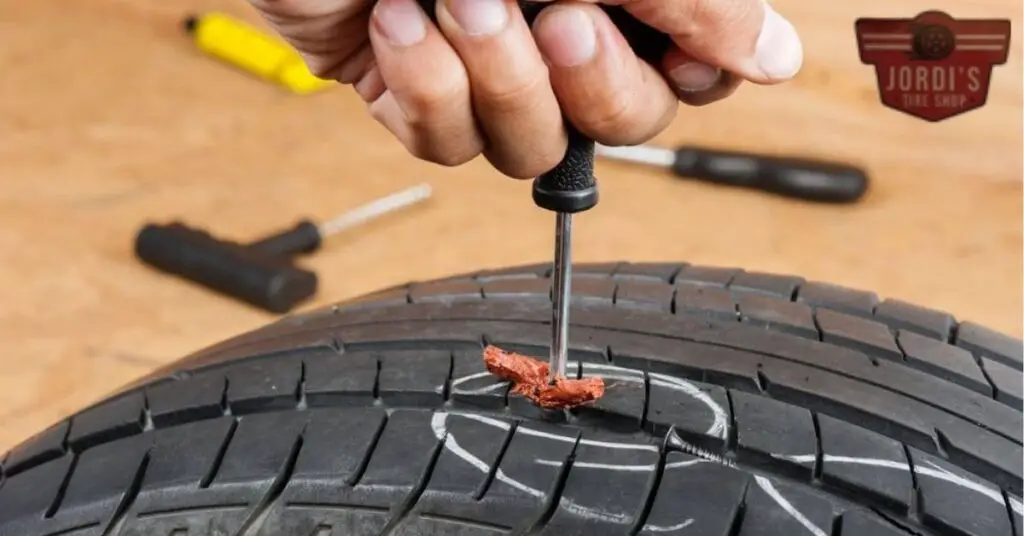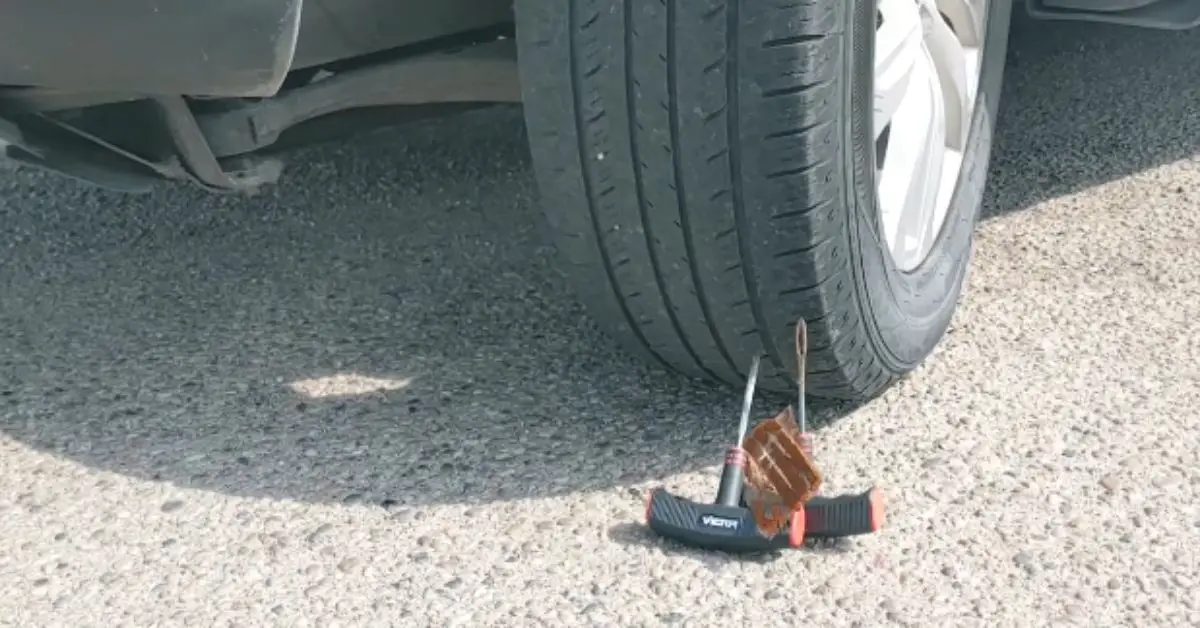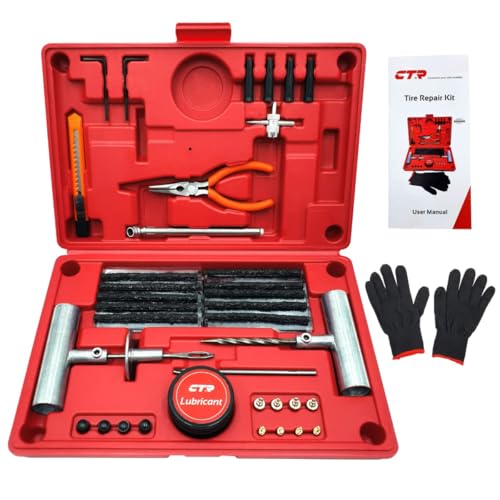You’re cruising down the highway when you hear that dreaded thump-thump-thump—your tire’s been punctured. Luckily, you’ve got a tire plug kit handy and manage to patch it up. But now you’re left wondering, how long can you really drive on a plugged tire?
Understanding the lifespan of a plugged tire is crucial for your safety and peace of mind. While a plug might seem like a quick fix, it’s essential to know its limitations and when it’s time to seek a more permanent solution. Let’s delve into what you need to know to keep your journeys smooth and secure.
Understanding Tire Plugs

Tire plugs offer a temporary fix for punctured tires. They help you continue your journey safely until you can find a permanent solution.
What Is a Tire Plug?
A tire plug is a sticky, expandable material inserted into the puncture hole of a tire. They’re made of rubber and create an airtight seal. This prevents air loss and restores some of the tire’s original functionality. Tire plugs can handle punctures up to 1/4 inch in diameter. They work best for simple punctures in the tread area, not on the sidewall.
How Are Tire Plugs Installed?
Tire plugs are installed using a plug kit, which includes tools such as a reamer and an insertion tool. First, locate the puncture and remove the offending object. Then, use the reamer to clean and enlarge the hole. This step ensures the plug fits properly. Next, thread the plug through the insertion tool. Push the plug into the hole until only a small amount remains visible outside the tire. Finally, trim the excess plug material flush with the tire surface. It takes about 10-15 minutes to complete the process.
The Lifespan of a Plugged Tire

You might wonder how long a plugged tire can last under normal driving conditions. Understanding its lifespan helps ensure your safety on the road.
Factors Affecting Durability
Several factors influence the durability of a plugged tire:
- Driving Habits: Aggressive driving, such as rapid acceleration and abrupt braking, can weaken the plug. Gentle driving extends its lifespan.
- Plug Quality: High-quality plugs, often made from durable rubber, provide a longer-lasting seal. Cheaper options may not hold up as well.
- Puncture Location: Plugs work best in the tread area. Punctures near the sidewall or other vulnerable spots may compromise the repair.
- Tire Condition: Older, worn-out tires might not hold a plug securely, whereas newer tires provide a better sealing environment.
Comparing Plugs to Other Temporary Repairs
Plugs serve as a quick fix, but how do they compare to other temporary repairs?
- Patches: Patches cover a broader area inside the tire and offer a more secure seal. Unlike plugs, they require the tire to be removed.
- Sealants: Liquid sealants can fill small punctures but might not work for larger holes. They often act as an emergency fix until a more permanent solution is implemented.
- Combination Repairs: Using both a plug and a patch provides enhanced security. This method is more reliable than using just a plug.
Understanding the lifespan and factors affecting a plugged tire helps you make informed decisions about your vehicle’s safety.
Safety Considerations When Driving on a Plugged Tire

Driving on a plugged tire involves understanding and mitigating potential risks. Follow these guidelines to ensure safety when relying on a temporary repair.
Risks of Driving on a Plugged Tire
Plug Failures: Plugs can fail due to poor installation, sustained high speeds, or extreme conditions, causing air leaks.
Limited Durability: Tires with plugs wear faster, particularly under heavy loads or harsh driving conditions. Reducing strain extends your tire’s life.
Structural Issues: Punctures may compromise tire integrity even if plugged. Damaged belts or layers might lead to blowouts, risking accidents.
Unpredictable Conditions: Weather and road conditions affect plugged tires more. Wet or icy roads can heighten failure chances.
Tips for Safely Driving on a Temporary Repair
Monitor Tire Pressure: Frequently check pressure to catch leaks early. Carry a portable gauge for quick assessments.
Reduce Speed: Drive slower to minimize stress on the plug, especially on rough roads or highways.
Avoid Long Trips: Limit travel distance to reduce the risk of unexpected failures. Stick to short, essential journeys.
Inspect Regularly: Check your tire for any new issues or plug deterioration. Make it a habit post-drive.
Seek Permanent Repair: Replace the plugged tire with a professionally repaired or new tire as soon as possible. Don’t delay this step.
When to Replace a Plugged Tire

Determining the right time to replace a plugged tire is crucial for safety. Recognize the indicators and follow expert advice to ensure your vehicle remains in good condition.
Signs Your Plugged Tire Needs Replacement
- Repeated Loss of Air: If the tire loses air persistently, even after plugging, replacement is necessary. A well-sealed plug should maintain pressure consistently.
- Damage Beyond Tread: Replace the tire if the puncture is near the sidewall or shoulder, as plugs are less effective in these areas.
- Visible Wear and Tear: Check for cracks, bulges, or uneven tread wear. Plugged tires with significant wear pose safety risks.
- Plugging History: Tires with multiple plugs have compromised integrity. Replace tires with more than one plug to avoid potential failures.
Professional Inspection and Recommendations
Seek a professional inspection from a certified technician after plugging a tire. Experts provide assessments based on:
- Internal Damage: Technicians dismount and inspect the tire internally. Hidden damages often require replacement.
- Repairable vs. Non-Repairable Areas: Professionals distinguish between areas where plugs are effective and those needing more permanent solutions.
- Manufacturer Guidelines: Follow manufacturer recommendations for repairs. Experts ensure compliance, enhancing safety.
Incorporating these guidelines helps maintain your vehicle’s safety and prolongs tire life.
Conclusion
Driving on a plugged tire is a temporary solution that requires caution and awareness. While a plug can effectively seal small punctures, it’s crucial to monitor your tire’s condition and seek a permanent repair as soon as possible. Regular inspections and professional evaluations help ensure your safety and extend the life of your tire. Always prioritize proper tire maintenance and be vigilant for signs that indicate the need for replacement. By following these guidelines, you can drive confidently and minimize the risks associated with plugged tires.
Related Posts:
- How Much Does an Alignment Cost at Big O Tires? Your Complete Guide
- How Long Can You Drive on a Plugged Tire? Safety Tips and Expert Advice
- How to Fix Tire Cupping: Easy DIY Steps & Expert Tips to Prevent Uneven Wear
- How to Fix Tire Squeaks When Turning: Causes, Solutions, and Prevention Tips
- Plug vs Patch Tire: Which Flat Tire Repair Method is Best for You?
- What Does Service Tire Monitor System Mean? Comprehensive Guide to STMS & Latest Innovations
- How to Cut Tires in Half Safely for DIY Projects and Gardening
- How to Fix Inner Tire Wear: Key Tips for Alignment, Suspension, and Maintenance
- How Long Does a Patched Tire Last? Tips for Maximizing Tire Lifespan







